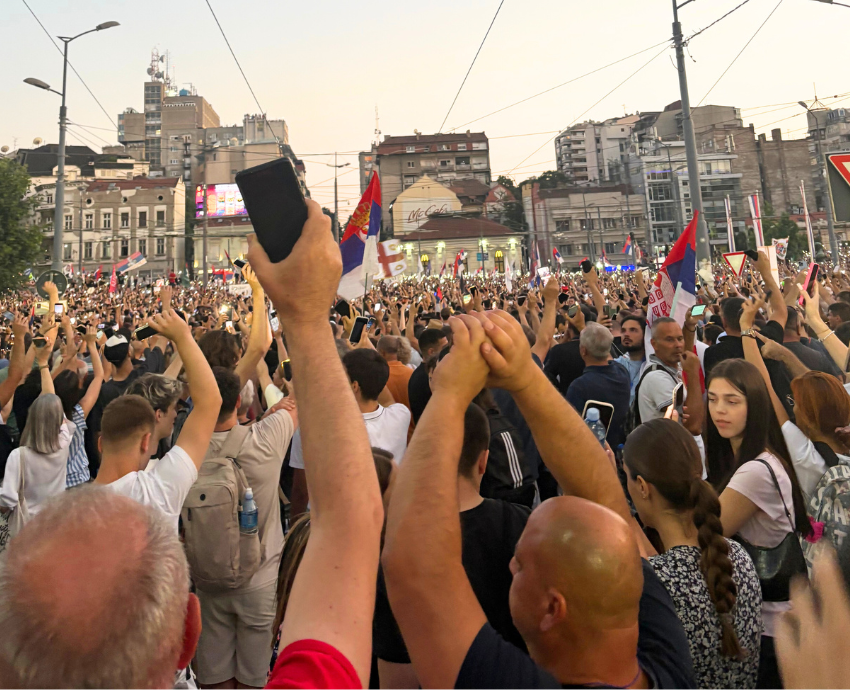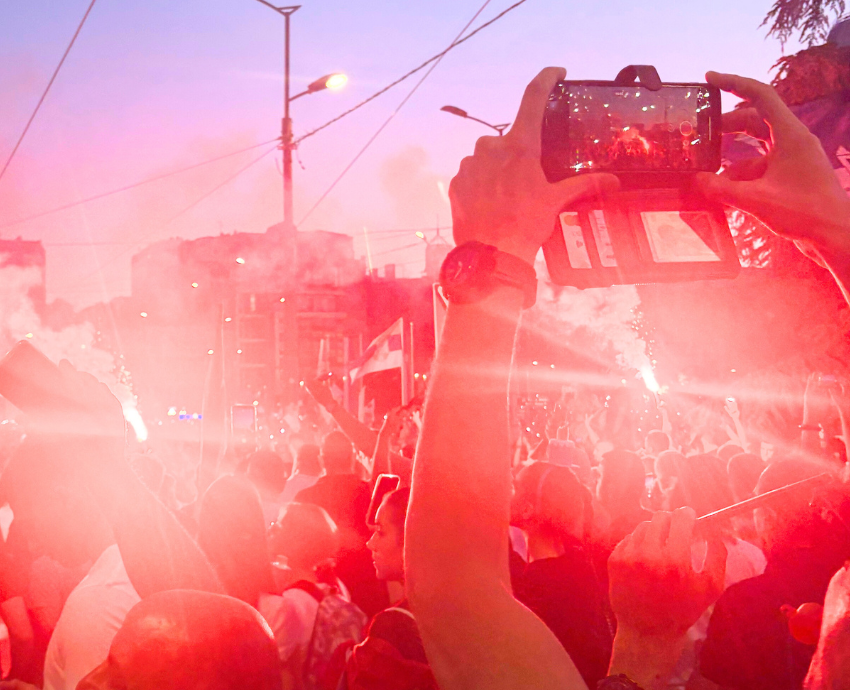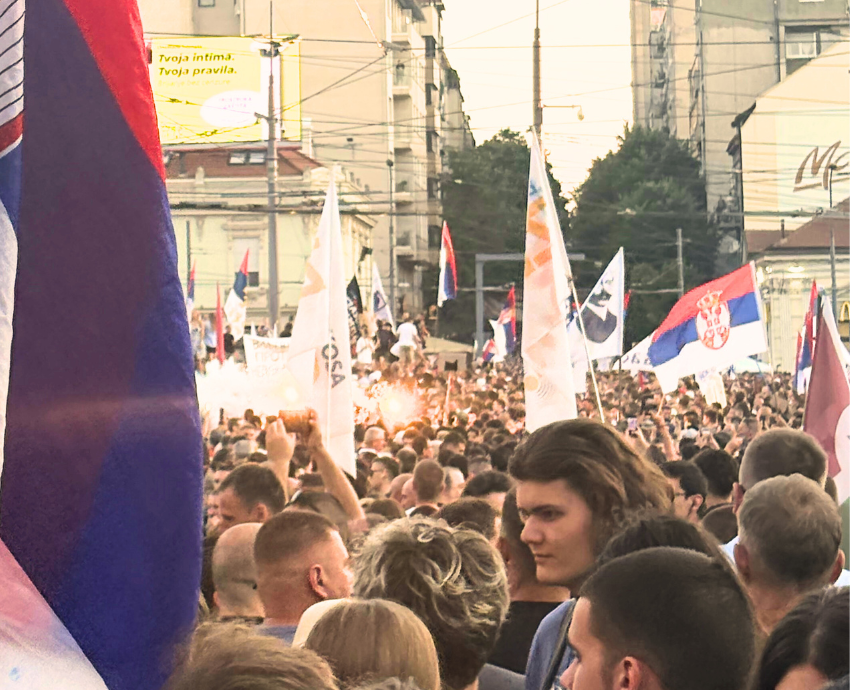
Since November 1, students and community members in Serbia have been blockading, protesting and building the largest anti-corruption movement Europe has seen in recent history. The wave of anti-government protests was triggered by the Aleksandar Vucic government’s failure to respond to demands for building contracts linked to an awning collapse at the Novi Sad train station that killed 15 people.
The historic March 15 protests saw hundreds of thousands of people take to the streets in protest against the government. Since then, the fight has continued.
In the wake of the March 15 protest, pro-government cronies set up a makeshift village in the city centre. It was aptly named “Cacilend”, a tongue-in-cheek nod to a misspelling of the Serbian word for “students” seen in pro-government propaganda. The village supposedly was set up as a camp for “students who just wanted to learn” — a response to the refusal of university students to attend classes since last year. However, not a single university-aged student was seen at the site, only older men who many suspect were paid to stay there.
Once again, the students did not let the government’s defiance, media control and lack of accountability deter them. They have continued to organise actions in the months since, adding to their list of demands for an election to be called urgently.

I returned to Serbia just in time to participate in one of their latest actions.
The students called the people onto the streets on June 28 — Vidovdan — widely regarded as a day of independence for Serbia. It commemorates the 1389 Battle of Kosovo, which marked a significant show of solidarity against the ruling Ottoman Empire. Holding a protest on this day symbolised the fact that freedom is once again at stake for the Serbian people.
The students issued an ultimatum to the government, demanding that an election be called by 9pm that night, otherwise a symbolic “green light” would be given to citizens and students. Up until that time, the protest organisers had been continually asking for peace and non-violence to be upheld.
My sister, some friends and family and I trekked on foot from our houses (since all the roads were blocked), as did hundreds of thousands of others, to join together in Belgrade’s central square, Slavija, in solidarity, strength and unity with the students.
We were warned that things could get ugly, and that we should probably leave after 9pm if we wanted to avoid the ensuing violence.
While we were there, it was like any other protest; there were chants of “if you don’t jump, you’re a Caci (pro-government supporter)” and the sound of whistles being blown everywhere.

The atmosphere was electric and anticipatory.
The children’s choir sang; war veterans shared stories about the significance of Vidovdan and relayed the importance of these protests in the nation’s history.
After 9pm, with the ultimatum having not been met, the green light was given, and chaos ensued.
Riot police were sent out in full gear to meet fired-up protesters, beating and arresting them in droves.
In response, student organisers said enough is enough, let’s go big or go home. So, on June 30, with no public warning or statement, they began blockading every major road, highway and thoroughfare in Belgrade and cities and towns throughout the country. They shut down and collapsed almost the entire road network of the country overnight — and threw a party while doing it.
My sister and I happened to be at a festival on the other side of town from our home when this all unfolded, so we were faced with a 10-kilometre, 3-hour walk home on a hot summer’s night. It was an amazing and inspiring adventure.
Along the way, we crossed one of the main bridges in Belgrade, met up with some friends participating in the blockade, whistled and shouted at scabs, made some new friends, continued along the highway (which was completely empty at this point as no cars were allowed through) until we made it home.

By morning, the blockades, like many before them, were intercepted by police and dismantled, and people arrested and beaten without cause, often by plain-clothed officers.
Consequently, the students vowed to do it again the next night and the night after that — and did — for weeks afterwards.
Serbia is currently being ravaged by wildfires caused by a blistering heatwave in the region, however, and out of respect, the students have halted their actions until the fires are under control.
What the future holds for the movement is yet to be seen. It is now technically summer break, but many faculties are forcing their students to return to their studies, to hastily catch up on the months of content missed and pass their exams so that they don’t have to deal with double the enrolments in the next school year, and so that students don’t have to repeat the year.
The sentiment towards these mandates is, on the whole, undecided. While most support the movement, the financial difficulty of having to repeat a year, as well as the pressure to uphold familial and societal expectations, has left them with no choice but to try and salvage whatever they can from this past school year.
I don’t think anyone quite expected the blockades to last this long, and for some, it has become increasingly difficult to see the light at the end of the tunnel. This is exactly what the regime wants, of course, which is why they must not falter.
Regardless, if the last eight months have taught us anything, this is certainly not the last we will hear from the students, and I hope that whatever action they concoct next will be the nail in the coffin of the chaos machine that is this dreadful government.